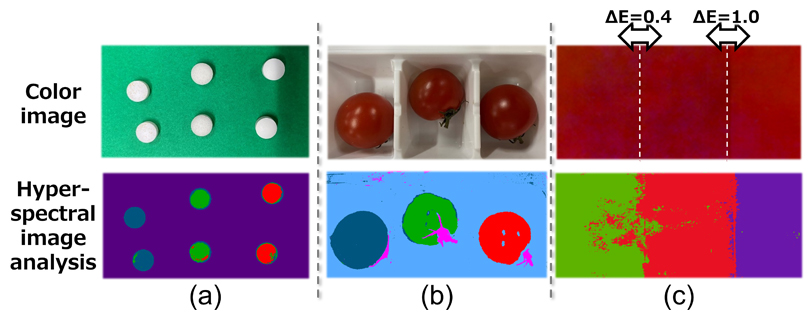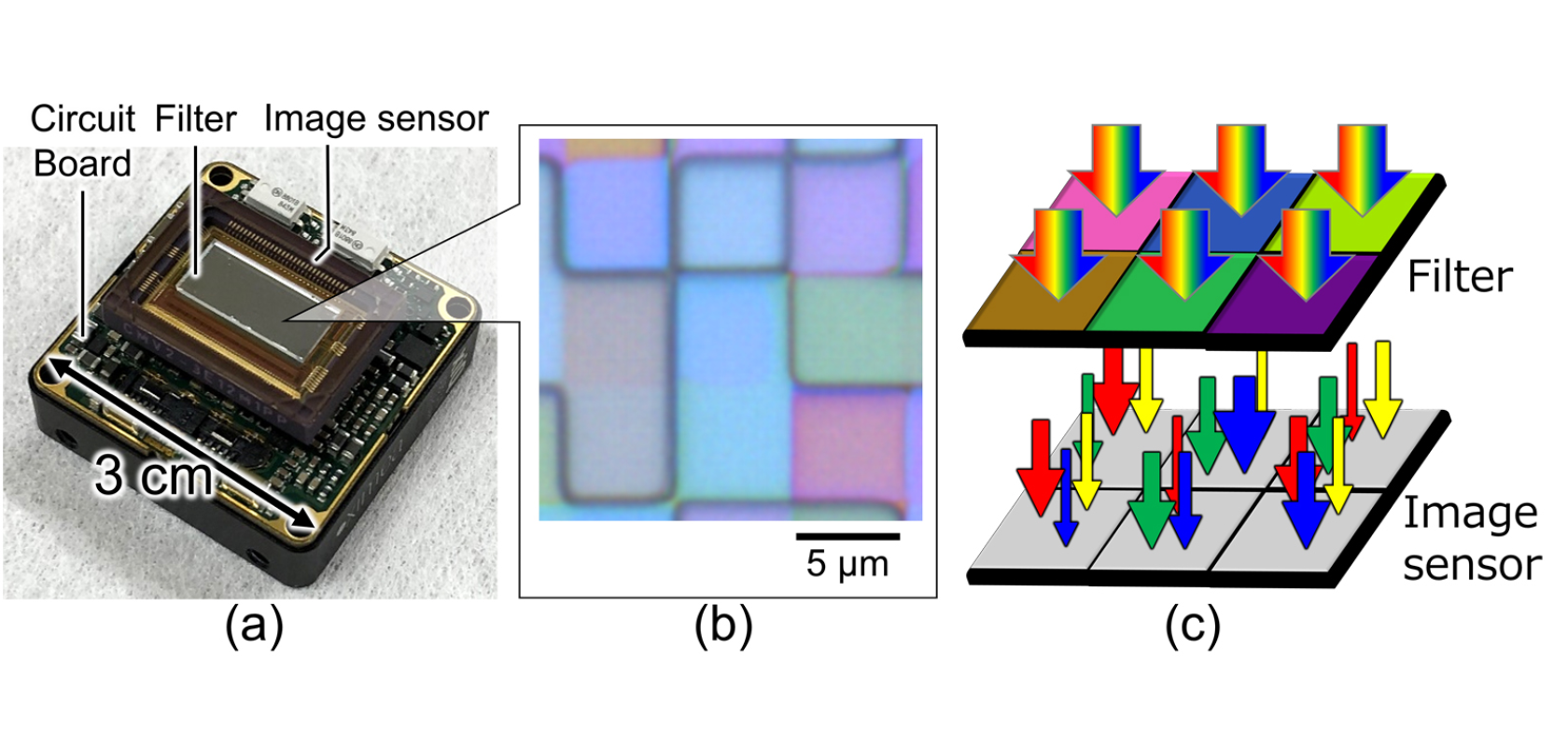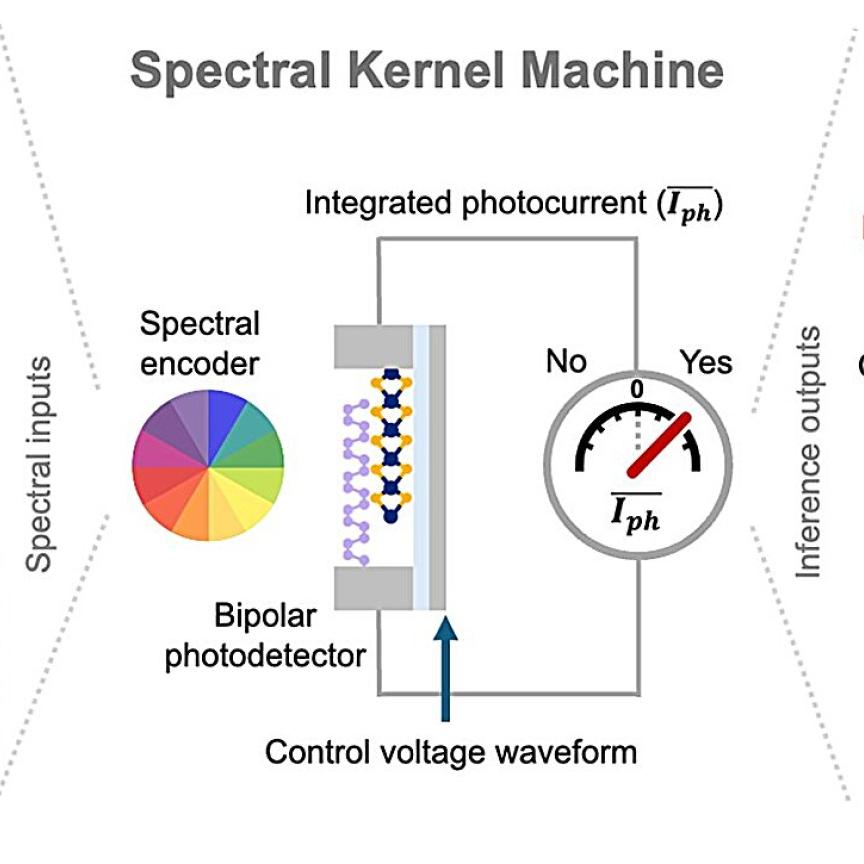Panasonic has developed what it says is the world's highest sensitivity hyperspectral imaging technology for low-light conditions.
Based on a ‘compressed’ sensor technology previously used in medicine and astronomy, the technology was first demonstrated last month in Nature Photonics.
Conventional hyperspectral imaging technologies use optical elements such as prisms and filters to selectively pass and detect light of a specific wavelength assigned to each pixel of the image sensor. However, these technologies have a physical restriction in that light of the non-assigned wavelengths cannot be detected at each pixel, decreasing the sensitivity inversely proportional to the number of wavelengths being captured.
Therefore, illumination with a brightness comparable to that of the outdoors on a sunny day (10,000 lux or more) is required to use such technologies, which decreases their usability and versatility.
The newly developed hyperspectral imaging technology instead employs ‘compressed’ sensing, which efficiently acquires images by "thinning out" the data and then reconstructing it. Such techniques have previously been deployed in medicine for MRI examinations, and in astronomy for black hole observations.

Application examples of the new technology include tablet (a) food (b) and coating (c) inspection (Image: Panasonic)
A distributed Bragg reflector (DBR) structure that transmits multiple wavelengths of light is implemented on the image sensor. This special filter transmits around 45% of incident light, between 450-650nm, and is divided into 20 wavelengths. It offers a sensitivity around 10-times higher than conventional technologies, which demonstrate a light-use efficiency of less than 5%. The filter is designed to appropriately thin out the captured data by transmitting incident light with randomly changing intensity for each pixel and wavelength. The image data is then reconstructed rapidly using a newly optimised algorithm. By leaving a part of the colour-separating functions to the software, Panasonic has been able to overcome the previous trade-off between the number of wavelengths and sensitivity – the fundamental issue of conventional hyperspectral technologies.
This approach has made it possible to capture hyperspectral images and video with what Panasonic says is the world's highest sensitivity, under indoor levels of illumination (550 lux). This level of sensitivity enables a fast shutter speed of more than 30fps, previously unachievable using conventional hyperspectral technologies due to their low sensitivity and consequently low frame rate. This significantly increases the new technology’s usability due it being easier to focus and align.
Application examples of the new technology, which was initially demonstrated alongside Belgian research institute Imec, include the inspection of tablets and foods, as this can now be done without the risk of the previously-required high levels of illumination raising their temperature.


